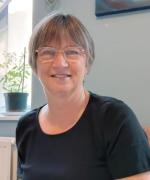The Nurses of Middlethorpe Hall
Rosemary Cook SpeakerNet Sponsor
- Region:
- Yorkshire & Humber
- Notice Period:
- Short (maybe less than one month's notice)
- Type:
- Hobby
- Fee:
- Paid: £40
- Category:
- History
- Updated:
- 1st October 2025
Middlethorpe Hall in York, built in the 17th century, is now a National Trust hotel. But in the 19th century, it was linked to two nurses who became famous in different ways. One was the driving force behind the creation of the State Registered Nurse in 1919; the other was a decorated army nurse who became the victim of an unsolved murder on a train in 1920. Based on extensive original research, this talk describes the contrasting lives and characters of these two remarkable women, and the triumphs and tragedies they experienced.
Views: 739 | Enquiries: 3About Rosemary Cook
I am a nurse by background and have considerable experience researching medical and nursing history: I have a PGDip in Applied Social Research, I have been a member of the committee of the Royal College of Nursing's History of Nursing Society, and a recipient of a Monica Baly research bursary.
My research into some interesting historical characters from these fields resulted in my first non-textbook publication 'The Nightingale Shore Murder' (the first and only book telling the true story of this unsolved crime from 1920, and the book behind Channel 5's 'Agatha and the Truth of Murder'). This was followed by 'Petticoat Government: the story of the York Home for Nurses', and 'The Crimes of Dr Gramshaw', published in 2019.
I live in York and I am happy to travel around North Yorkshire and Humberside to speak, during daytime or evenings. I also can also provide all my talks online. For more see www.rosemarycookauthor.co.uk
Reaction to my talks:
‘A tour de force! What a terrific talk!’ Rotary Club of Northallerton Mowbray
‘Engaging, well thought out and entertaining. I have had lots of emails from members saying how much they enjoyed it.’ National Women’s Register
‘Thank you for a really amazing talk, the format and subject was brilliant, we are still arguing and discussing it on our Facebook page!’ Carnegie Girls WI
‘Thank you so much for your talk, easily the best zoom we’ve had and great feedback from members.’ Threshfield and Linton WI
Other Talks on SpeakerNet by Rosemary Cook
- "Solving the Nightingale Shore Murder"
- "Petticoat Government" - the story of the York Home for Nurses
- "The Crimes of Dr Gramshaw" - downfall of a Yorkshire doctor
- Tales from Dringhouses Railway - the solicitor, the skater, the signalman and the scholar
- "Murder as a Science" - the wickedness of Dr Warder
Send a message to the speaker
If you are interested in this talk and wish to contact the speaker, please complete the following form:


